Alyssa Bradford and Trevor Myers
Uniting Diverse Faiths Through Temples
Sikh temples, or Gurdwaras, are places of worship. Originating in India, the religion allows everyone to enter their temples. The Golden Temple, pictured in India, is the most sacred. Video by Shalender Kumar.
Introduction
Moved by a couple realizing they could see their son after death, Latter-day Saint temple tour guide Archna Kalra tearfully said, “And these are the longings of every human heart, to be with our families.”
The Church of Jesus Christ of Latter-day Saints holds open houses for newly constructed temples. Thousands come to view the remarkable and sacred interior. With more than 300 temples dedicated, under construction or announced, the globe-spanning religion considers those places the most sacred on earth.
Representing “the house of the Lord,” these temples provide the services of teaching the purpose of life, explaining God’s plan of happiness and binding families together forever. However, these values, beliefs and ideas also hold meaning to those of other faiths, including a Sikh family from Chico, Calif., that interacted with a team of Daily Universe student journalists recently at the Feather River Temple Open House. This is their story.

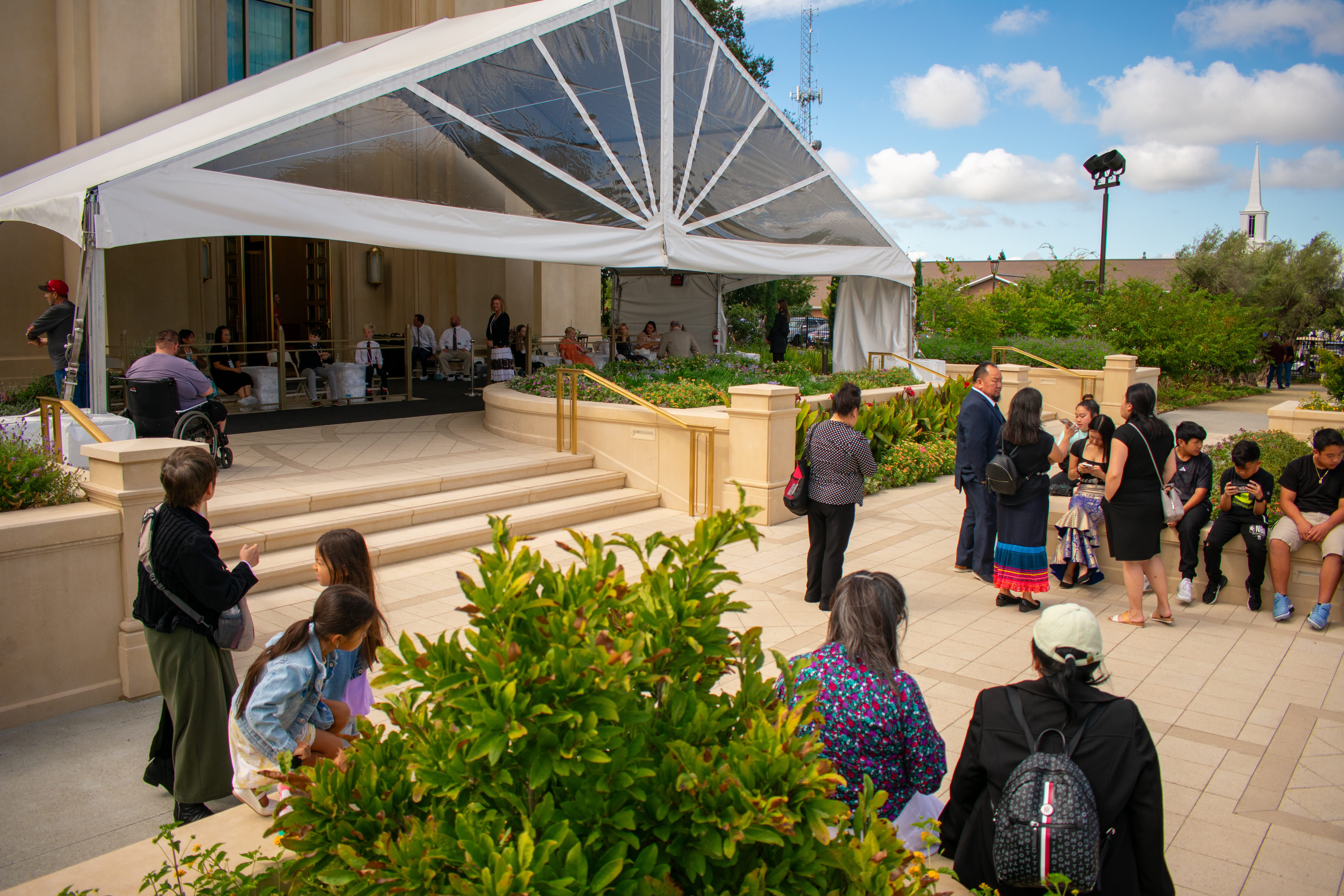
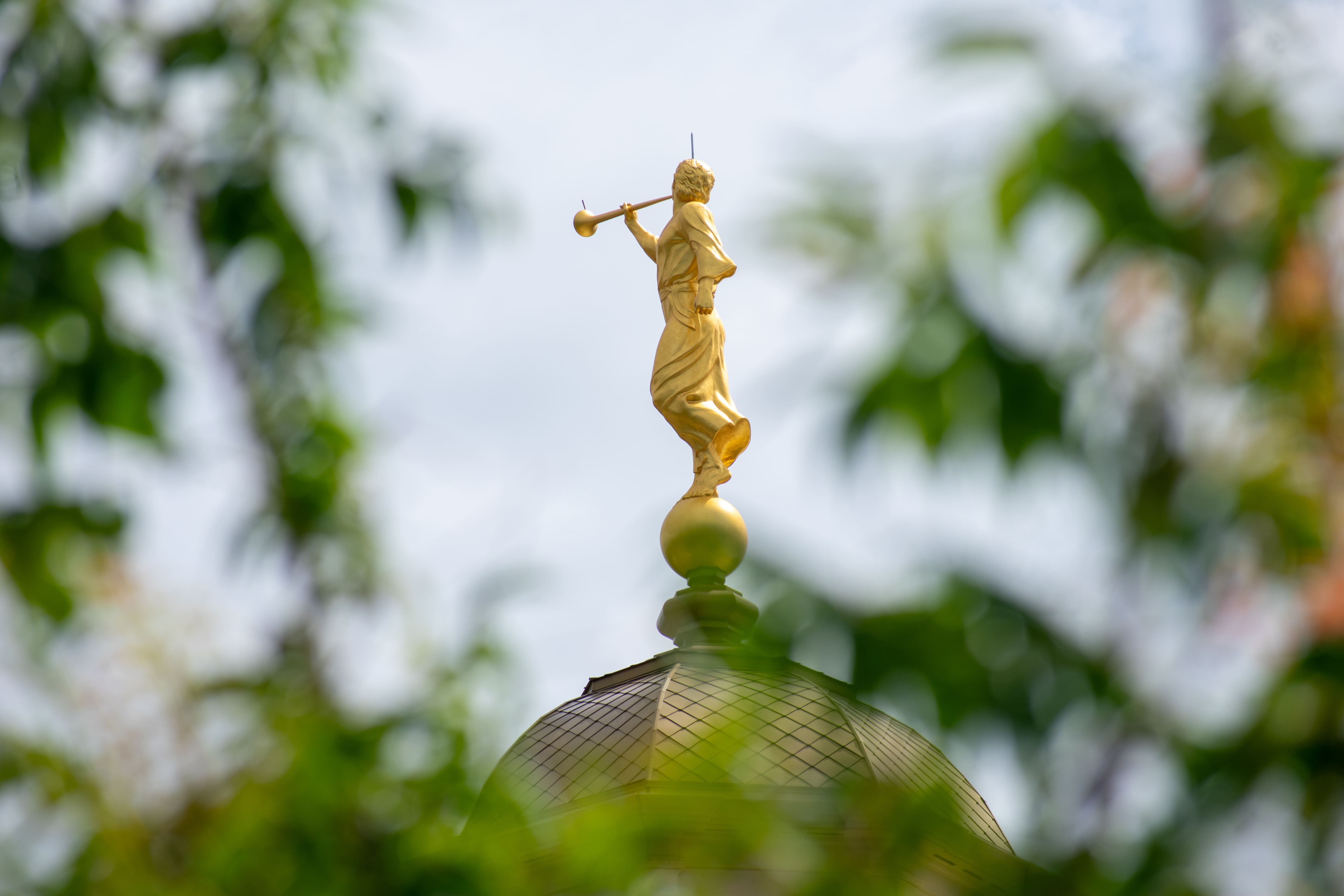
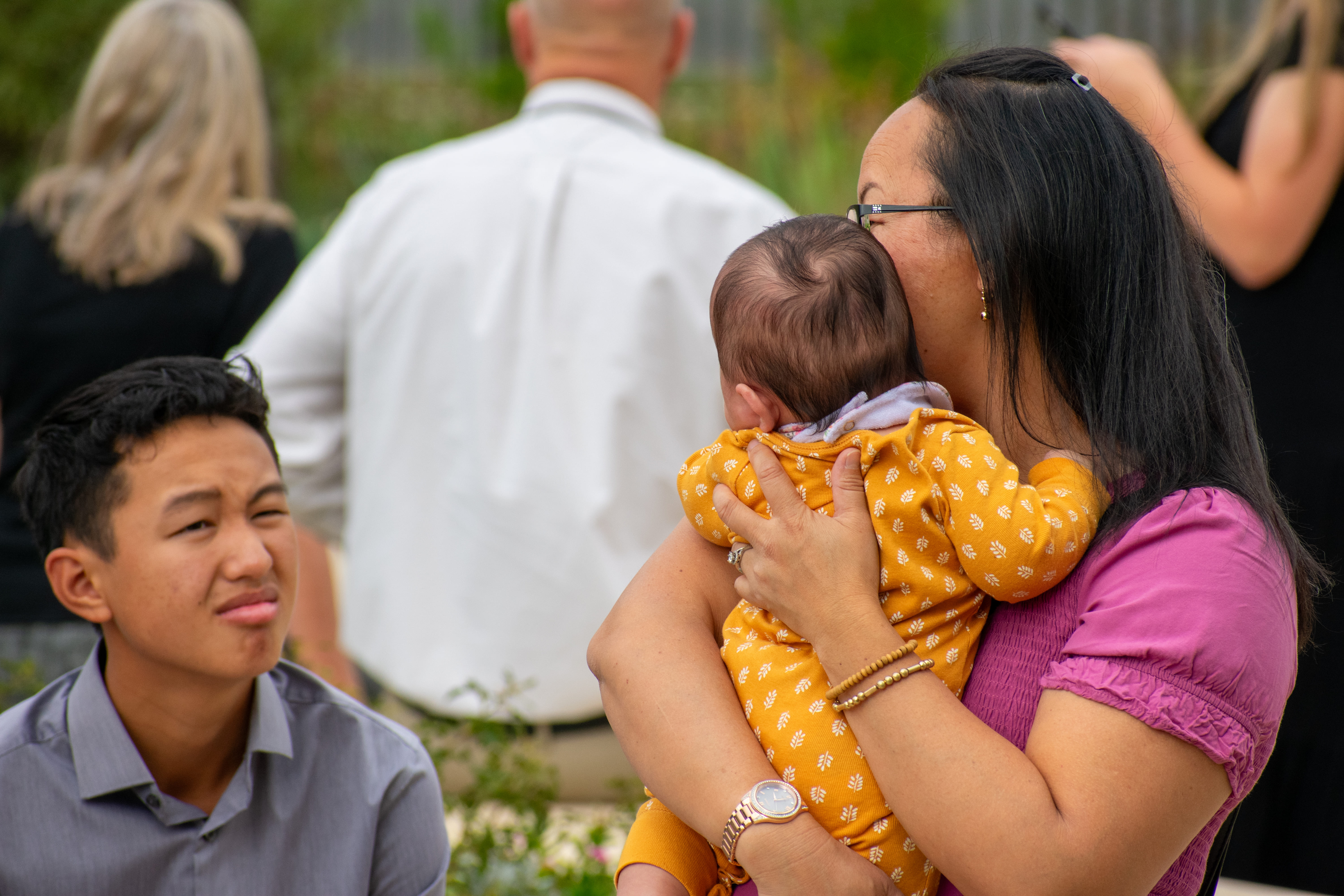
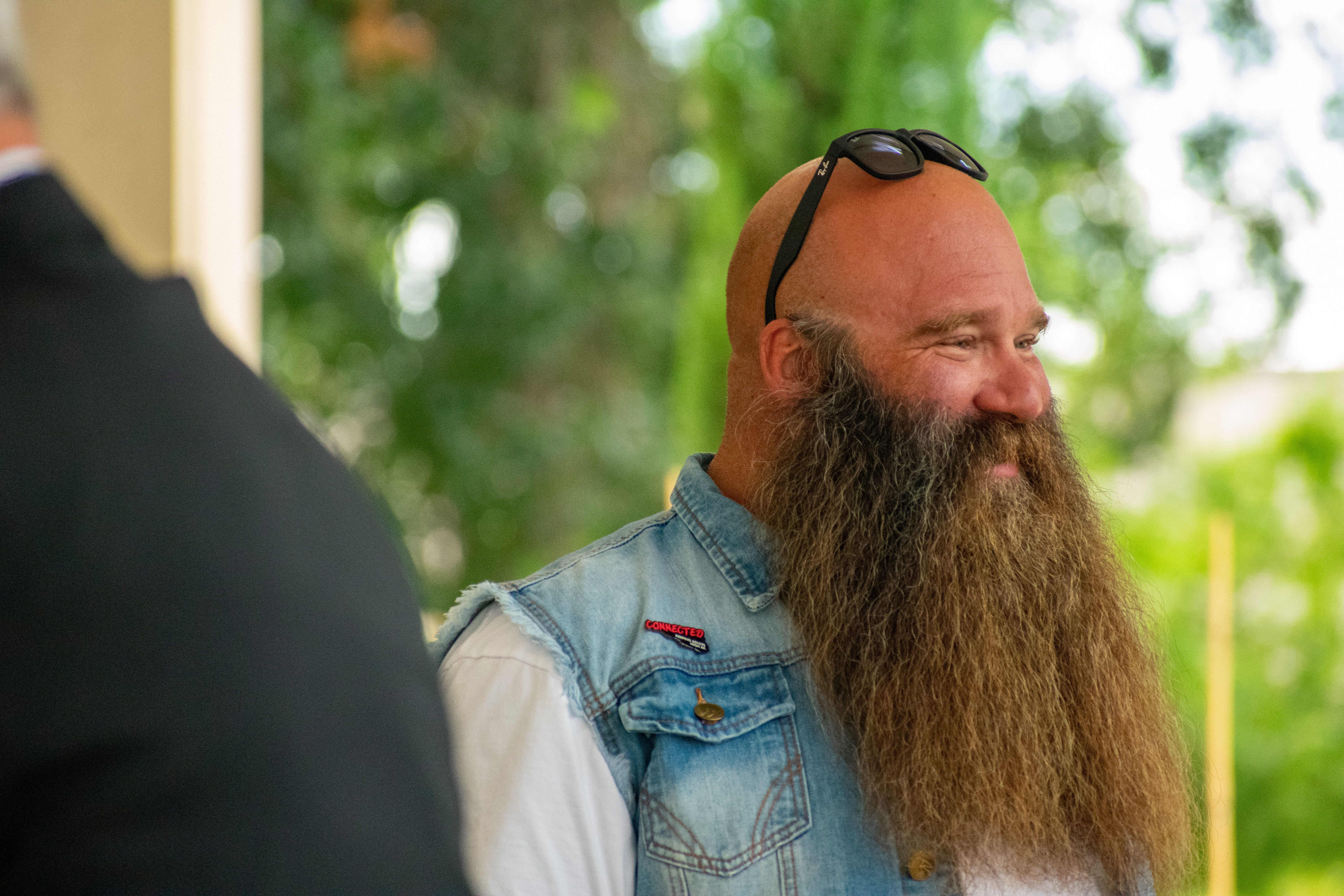
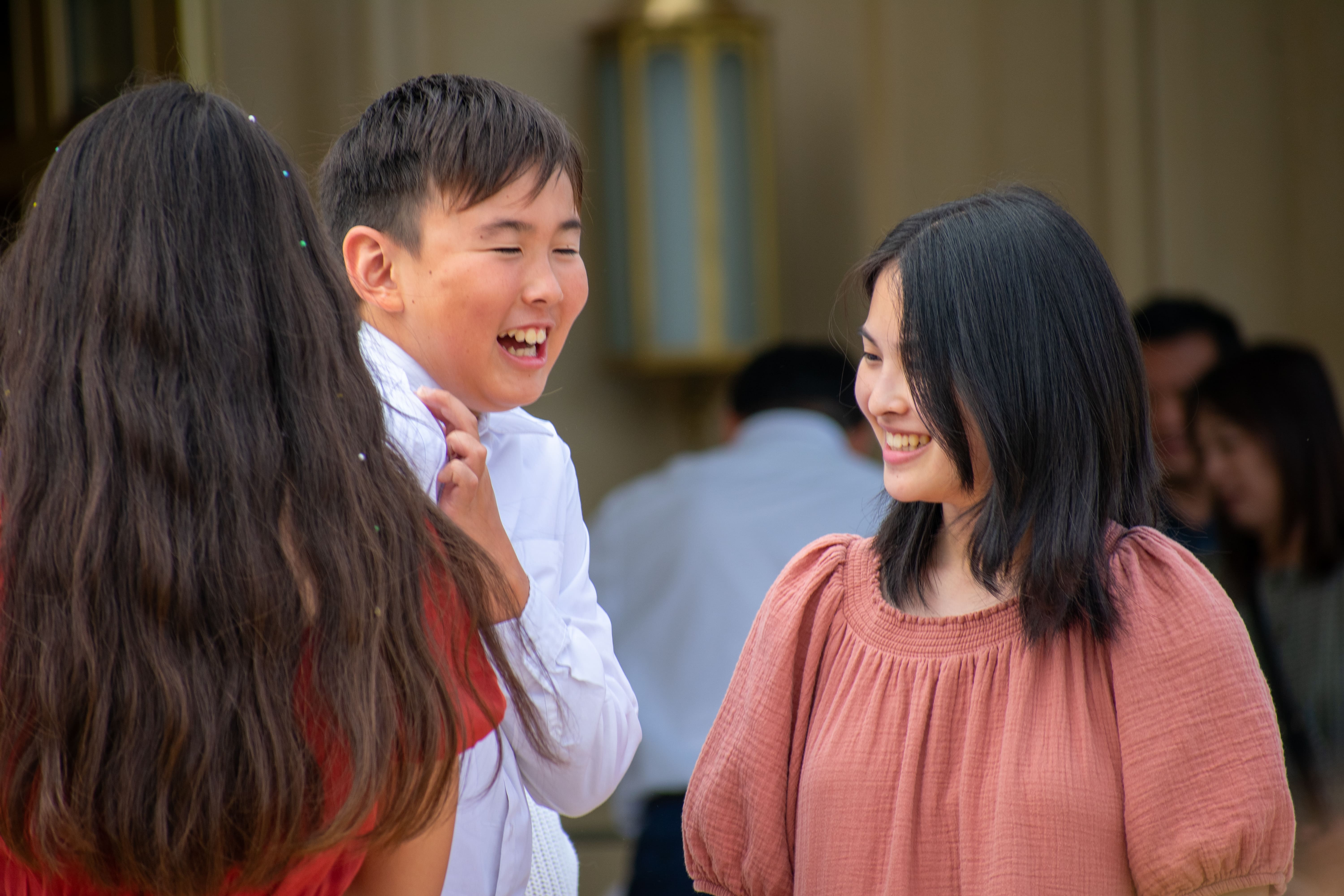
Little Punjab
Yuba City is located in the Sacramento Valley next to the Sutter Buttes, which are known as “The World’s Smallest Mountain Range.” The Feather River, which the new Latter-day Saint temple is named after, runs along the east side of the city.
In Yuba City, Calif., the groundbreaking for the Feather River California Temple occurred on July 18, 2020. More than three years later, the construction was finished in time for the public open house to take place Aug. 19 to Sept. 9, 2023.
Home to about 69,000 people, according to the Census Bureau, the city has another name: Little Punjab.
Originally found around Northern India and Pakistan, the majority of Punjabis practice Sikhism.
India Empire Magazine notes the immigration of Pubjabis to Yuba City happened more than 100 years ago. In search of work while coming from a background of peasant proprietorship and farming skills, many worked on California farms.
Yuba City is home to several Sikh Temples, one of which a group of BYU journalism students was able to attend in early September.
Tierra Buena
After visiting the Feather River California Temple open house, we made our way to the Sikh Temple Tierra Buena, or Gurdwara Sahib.
Before entering the gurdwara, there was an immediate sense of friendliness from a small group of individuals asking if we were part of the wedding party. Upon realizing this, our group thought to leave so as to not interfere. Instead, we were graciously invited inside.
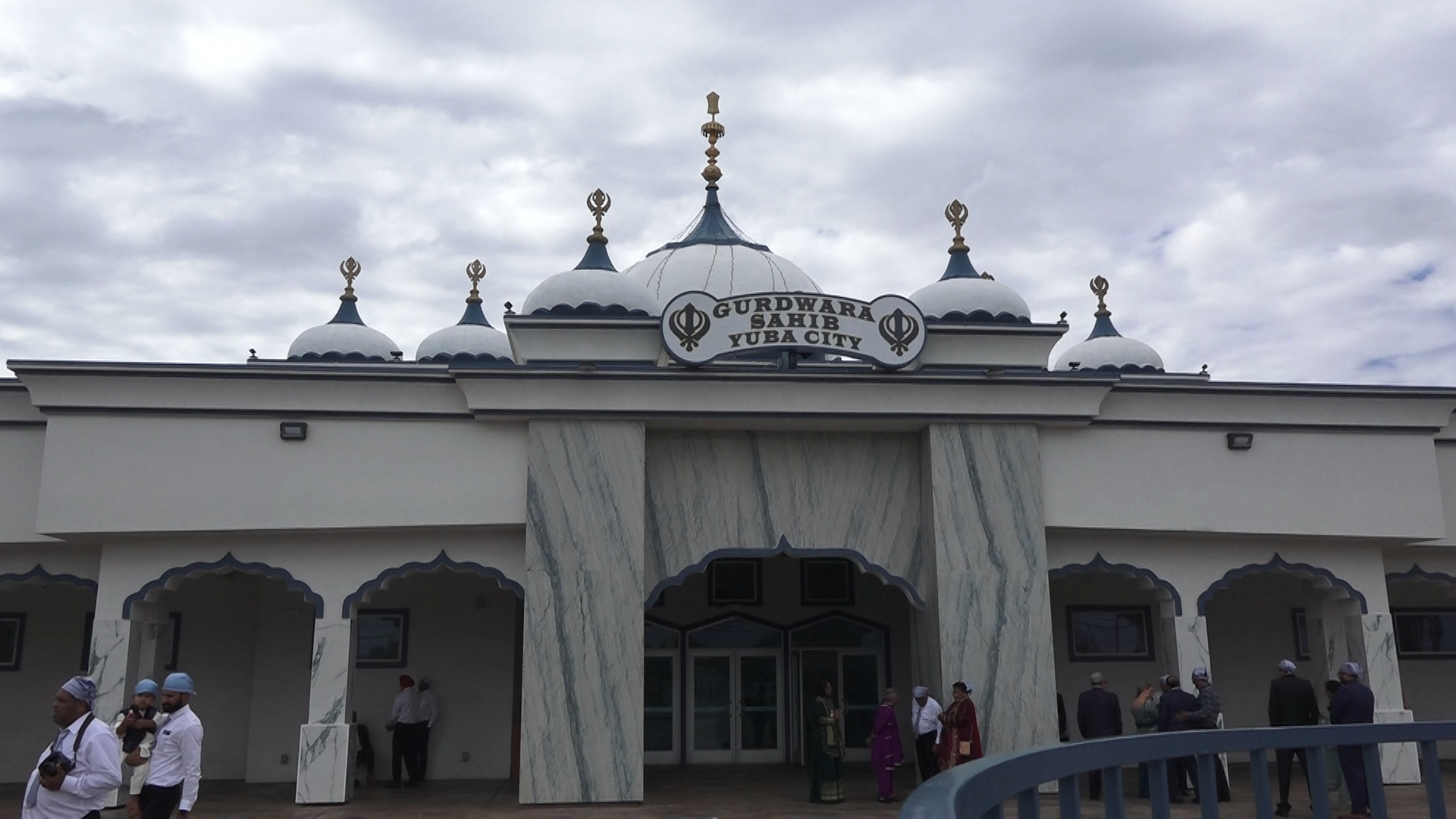
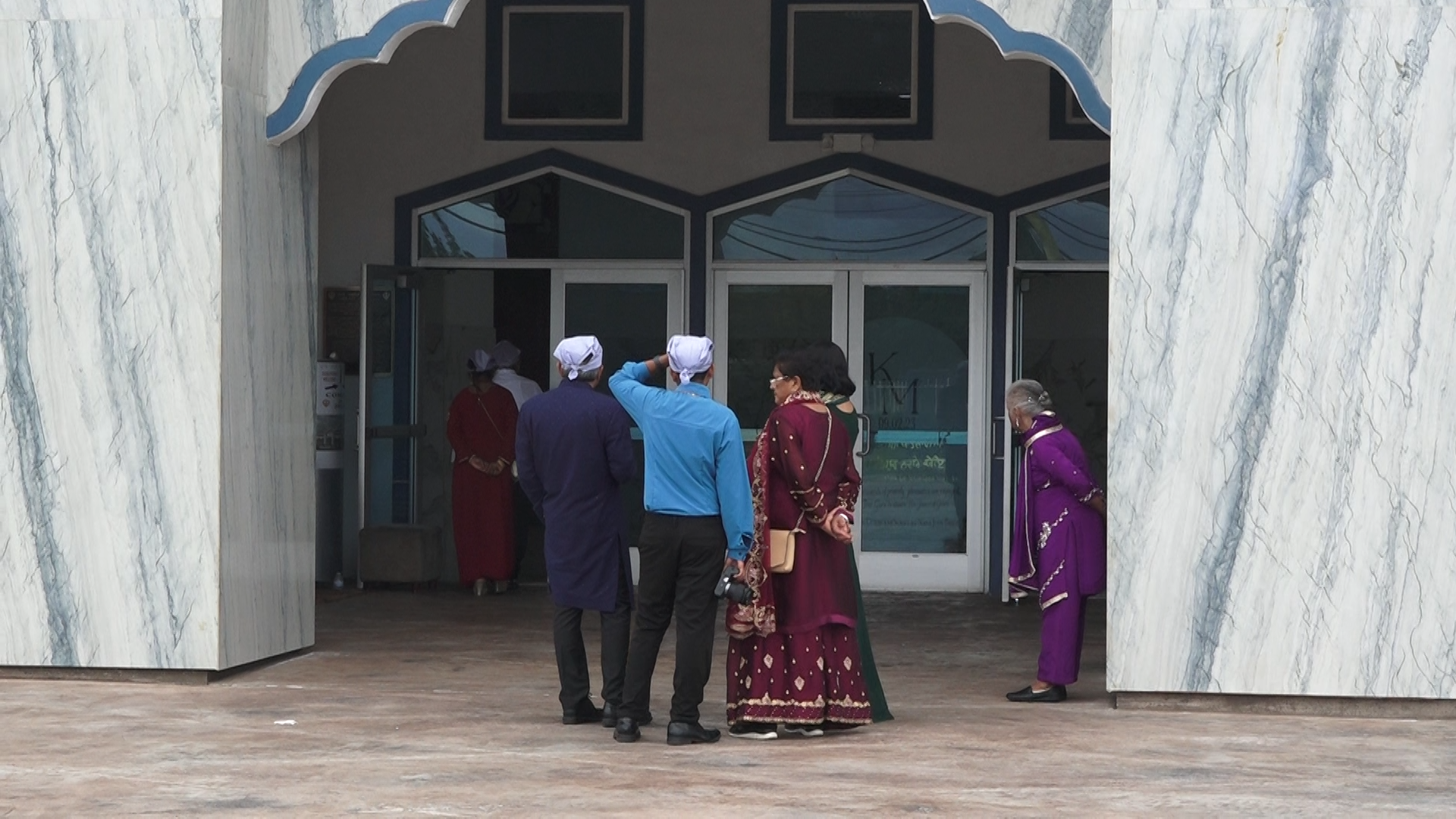
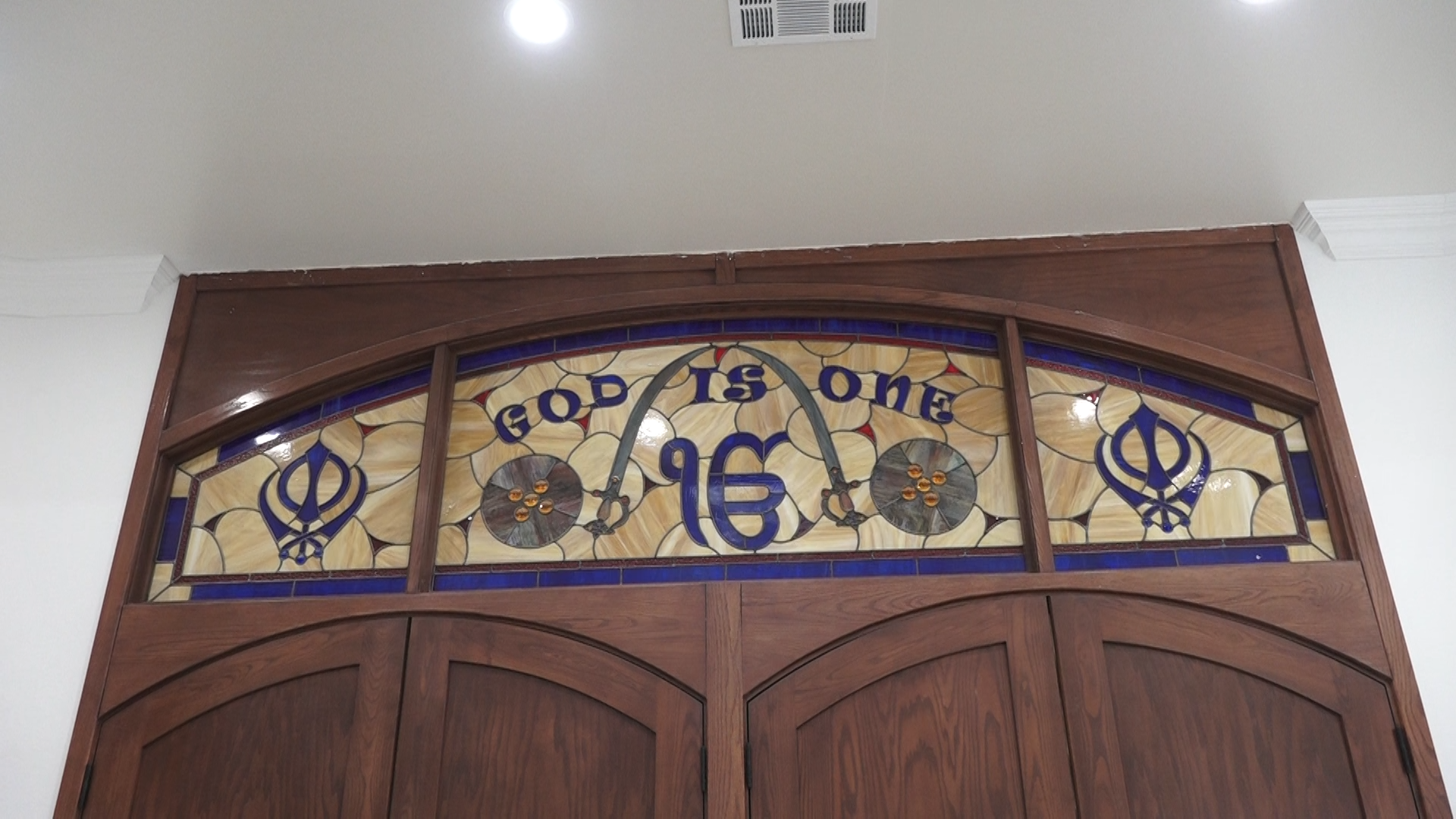
For respect, we were first instructed to take off our shoes and place them into one of the open cubbies. However, when asked to tie a headscarf over our heads, we were afraid. Not wanting to show disrespect, while being embarrassed of our inability to understand, we asked different wedding party members if what we did was okay. Despite our worry, each time we were met with warmth, comfort and approval.
We first stepped into the room of worship. The space was covered with carpet where families, coming in and out, sat while sharing prayer and chants. This is where the worship service was held.
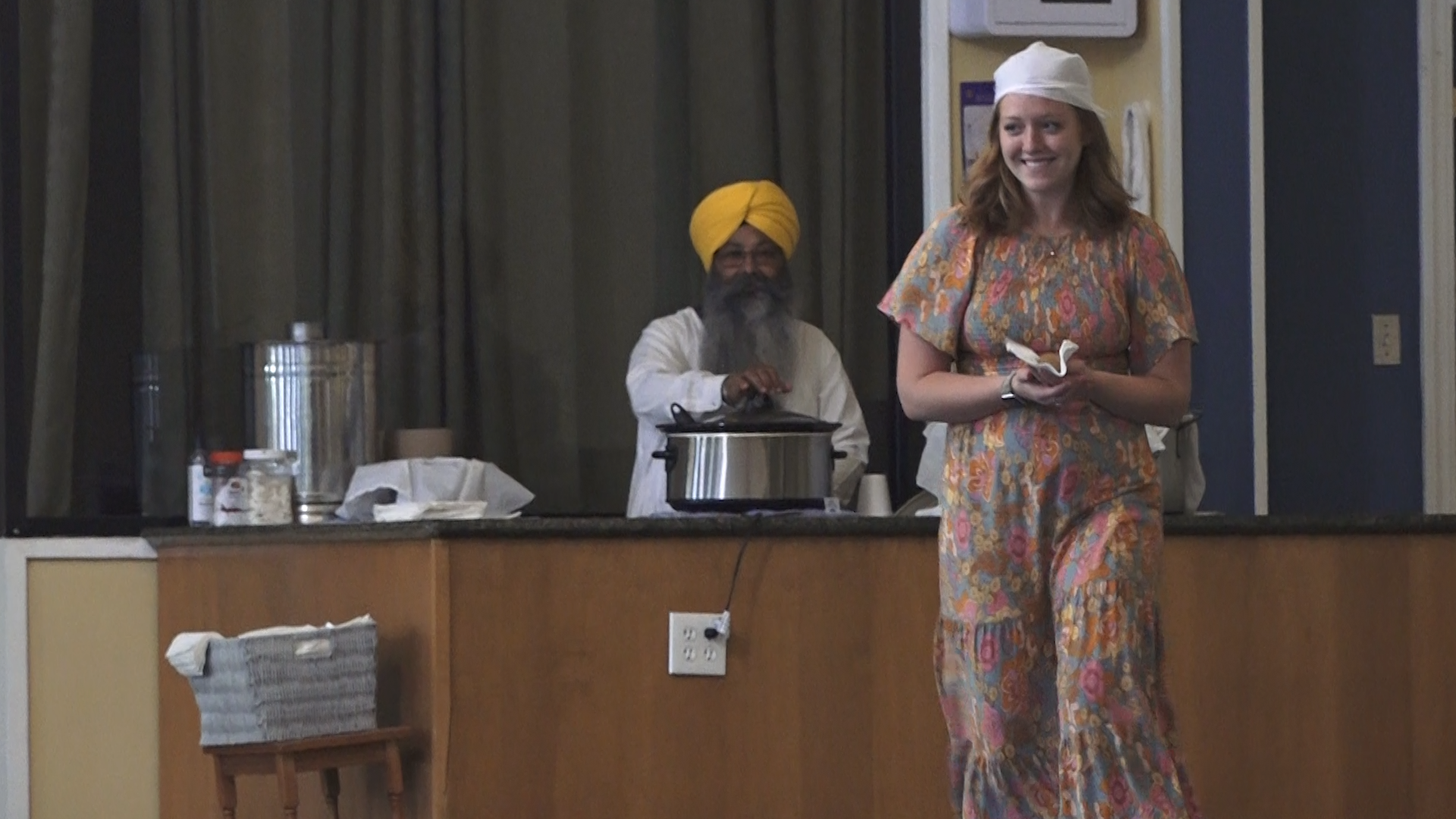
In the corner of the room stood a man with a crockpot, napkins and a large ladle. He smiled when we approached, asked us to grab a napkin and scooped the sacrament, or karah prasad, into our hands. Made of equal parts refined wheat flour, clarified butter (or ghee) and raw sugar, the karah prasad was sweet and greasy.
While we walked around the front of the room, a man approached us and introduced himself as Raj Singh. He asked us how we were doing and why we came to the temple. All of us sat with him while he began answering our questions about Sikhism. His family soon joined.
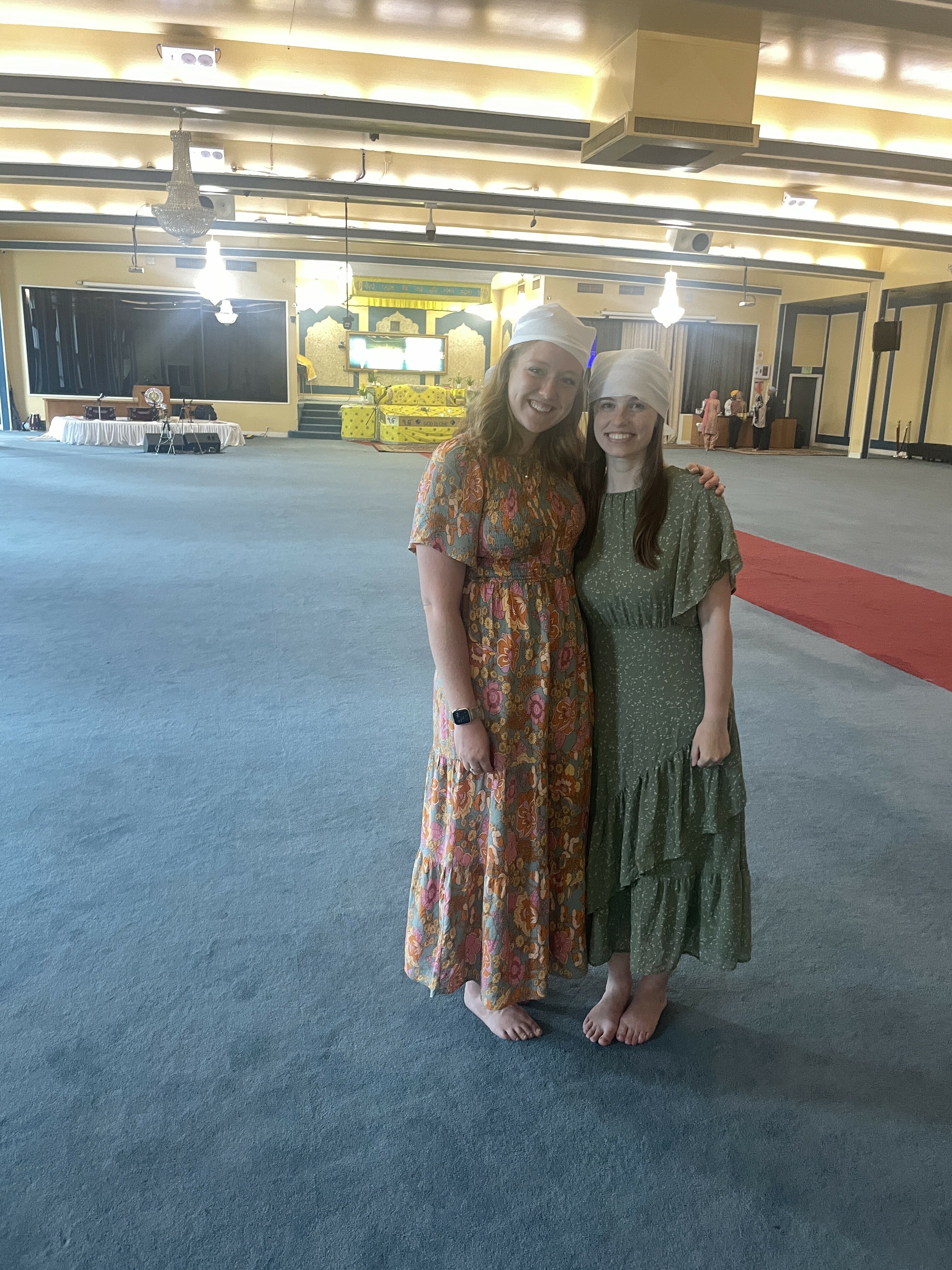
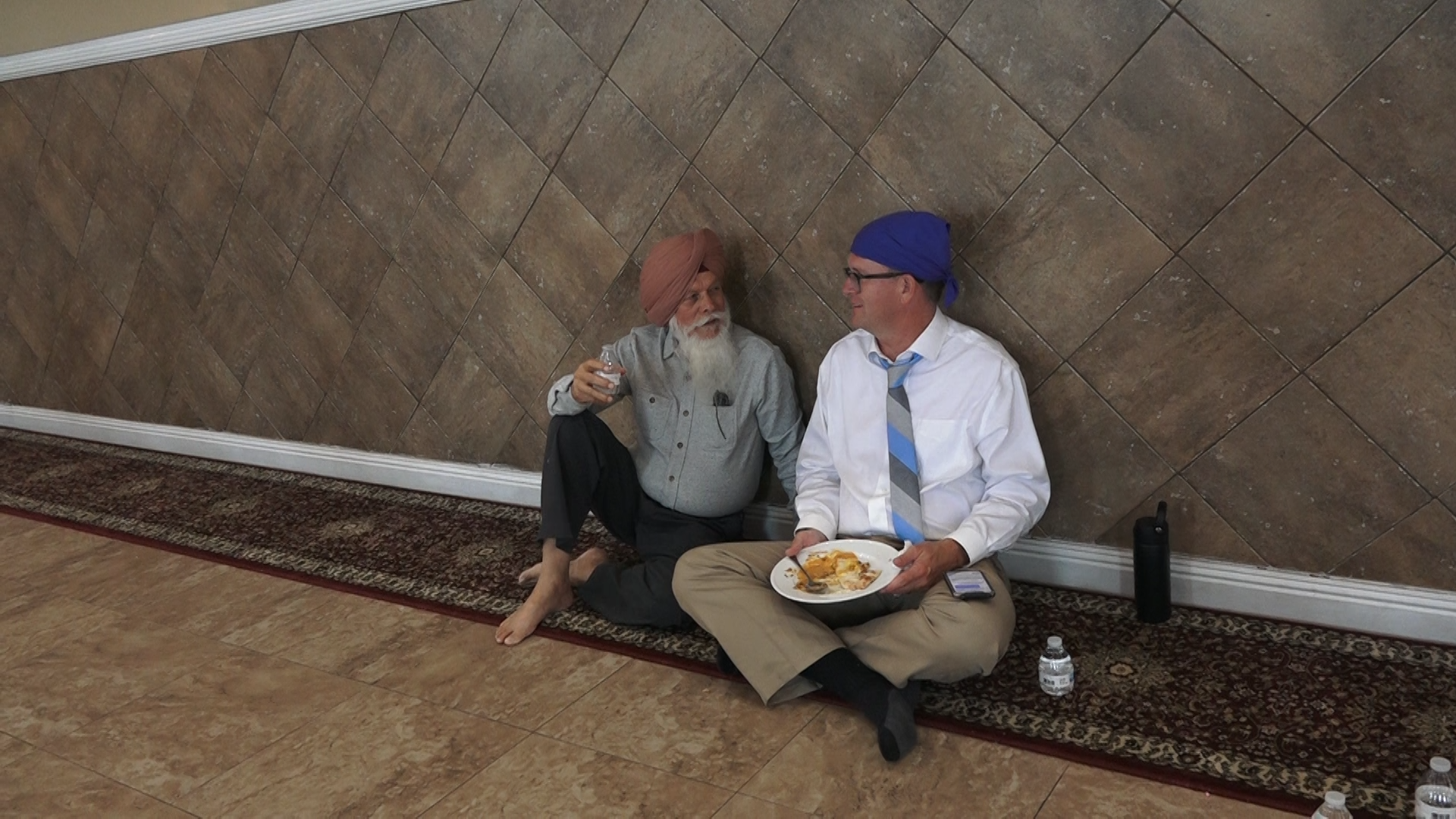
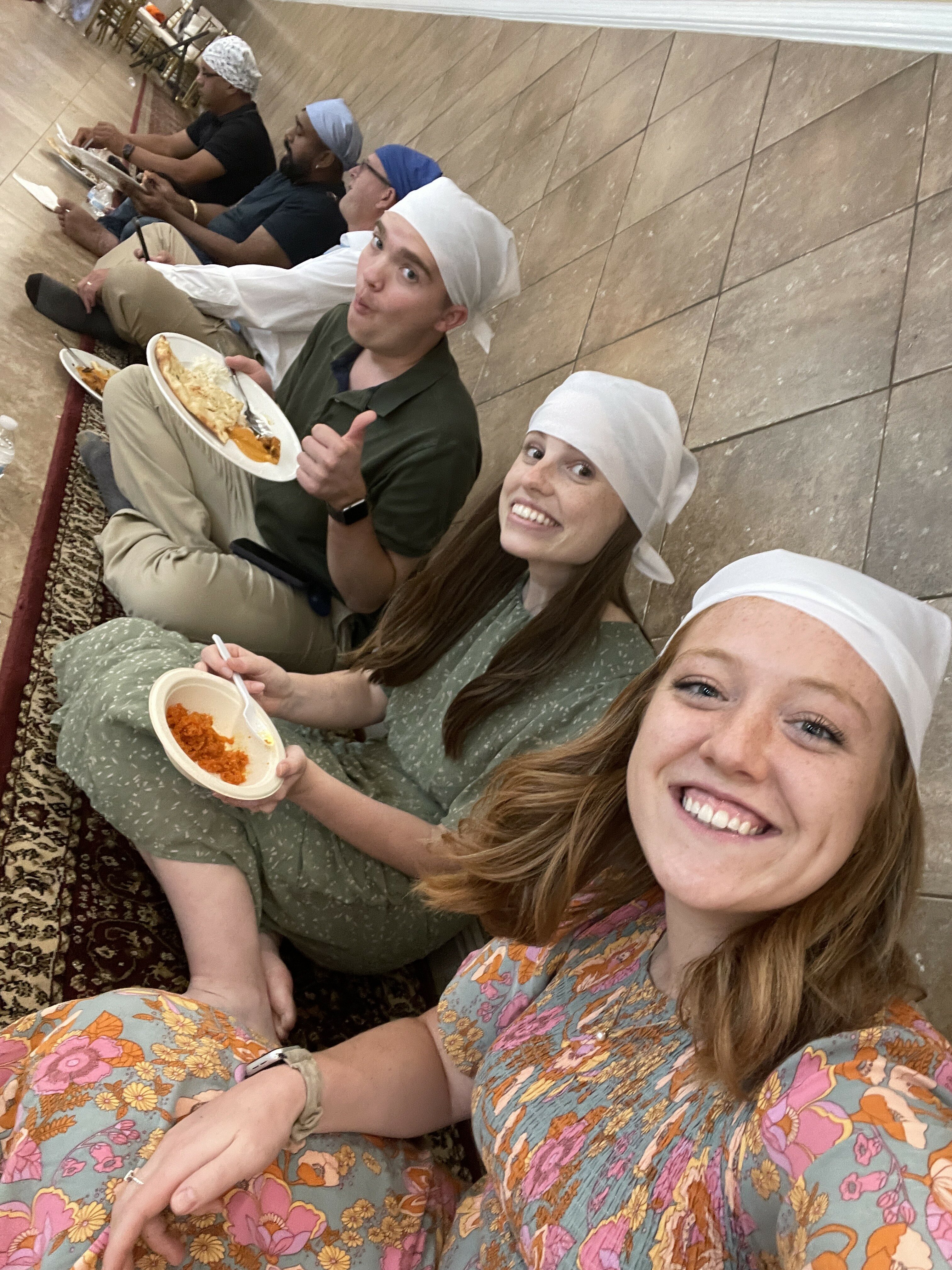
Together, we sat on the floor chatting and learning about the basics of Sikh beliefs and practices. It was then that Raj said, “We actually came here to see the Mormon temple.”
The Singh family had traveled an hour south from Chico to see the Latter-day Saint Feather River California Temple and had decided to stop at the Sikh temple on the way.
We laughed as we shared that we were there for the same reason. They invited us to go back to the open house with them, but first to eat lunch.
We had already eaten and, again, did not want to impose on the wedding party, but they insisted, teaching us that feeding the hungry is a key Sikh practice and meals were free all day long.
They walked us through to another room that was full of lavish wedding tables and guests. We walked to the back of the room where chafing dishes were full with curries, rice, naan and other sides. Raj’s wife, Leena, kindly told us which curry was the least spicy and we served ourselves.
We then followed the Singhs to a traditional sitting area where we sat on the ground to eat our food that was rich and delicious. After finishing, we made our way back to our cars to drive the five minutes to the Latter-day Saint Feather River California Temple.
When we arrived we were sure to find a friend we had met earlier, Archna Kalra.
Archna’s Story
Because of the large Punjabi community in Yuba City, Archna Kalra came from Washington to help give tours of the new temple in the Punjabi language. Archna joined the Church in India in 1989, converting from Hinduism. She has a background and understanding of the religions prominent in India.
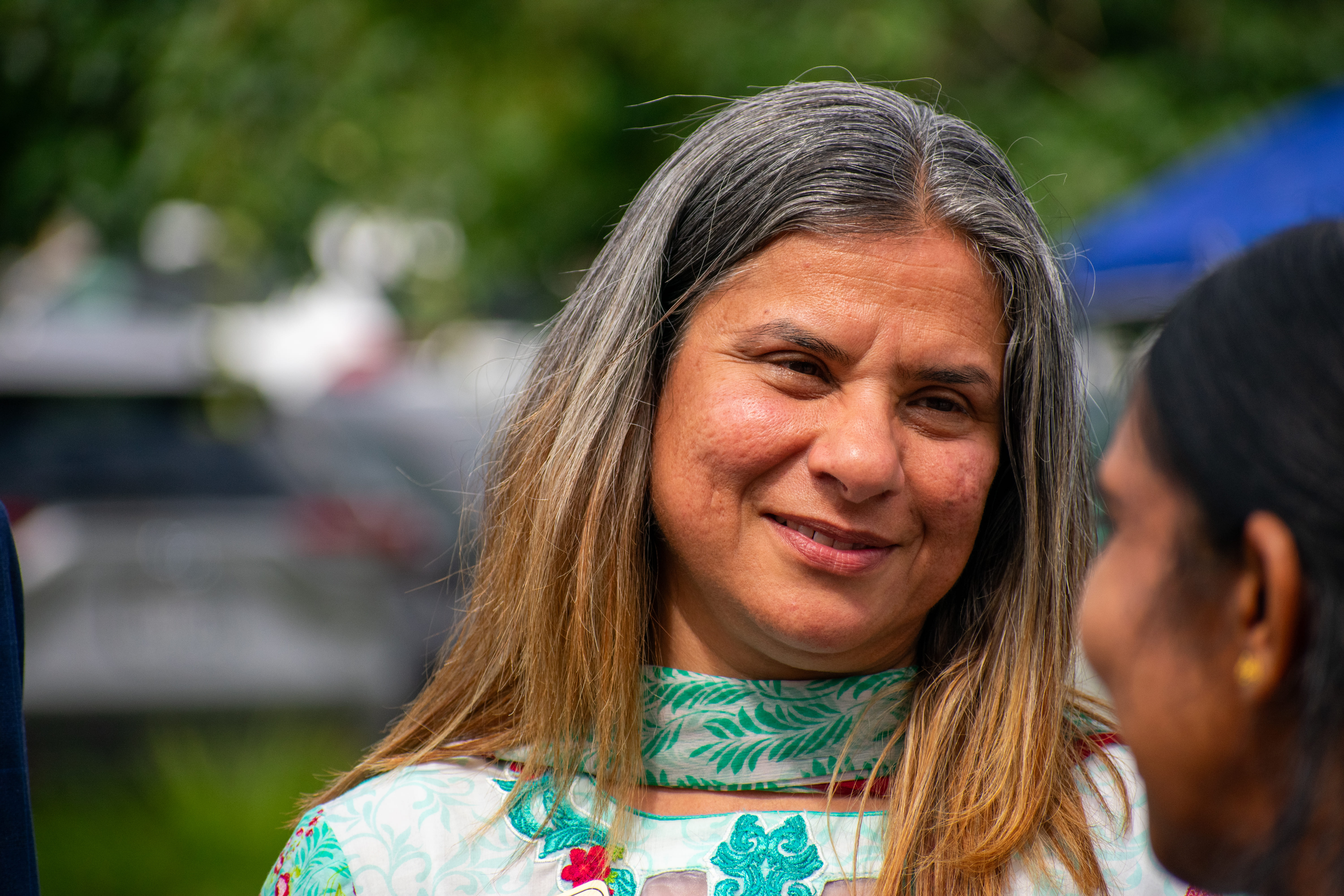
“The local community here… it has been amazing for us to see their support, their willingness to accept this as the house of the Lord and to just come and appreciate the beauty, the spirit that is to be felt there,” Kalra said.
When asked about any specific experiences or people she especially connected with, she spoke of a couple who found interest in the beauty and quality of the architecture.
“But when we got to the sealing room, and I started talking about eternal families and I had them stand and look in the mirrors as a couple. And then they sat down, first the wife, she started to sob. And then I turned around and looked at her husband, and he … could not control his tears, and I felt like they had felt the spirit really strongly.”
When asked more about eternal families, Archna shared her own personal experience: the death of her sister. She bore witness to the couple that she would see her sister again.
“When we came out of the temple … the sister, she took me aside and she said, ‘We lost a son. And we just can’t imagine that we could ever be with him again. But this is what we long for.’”
Describing this emotional experience, Archna said, “And these are the longings of every human heart, to be with our families.”
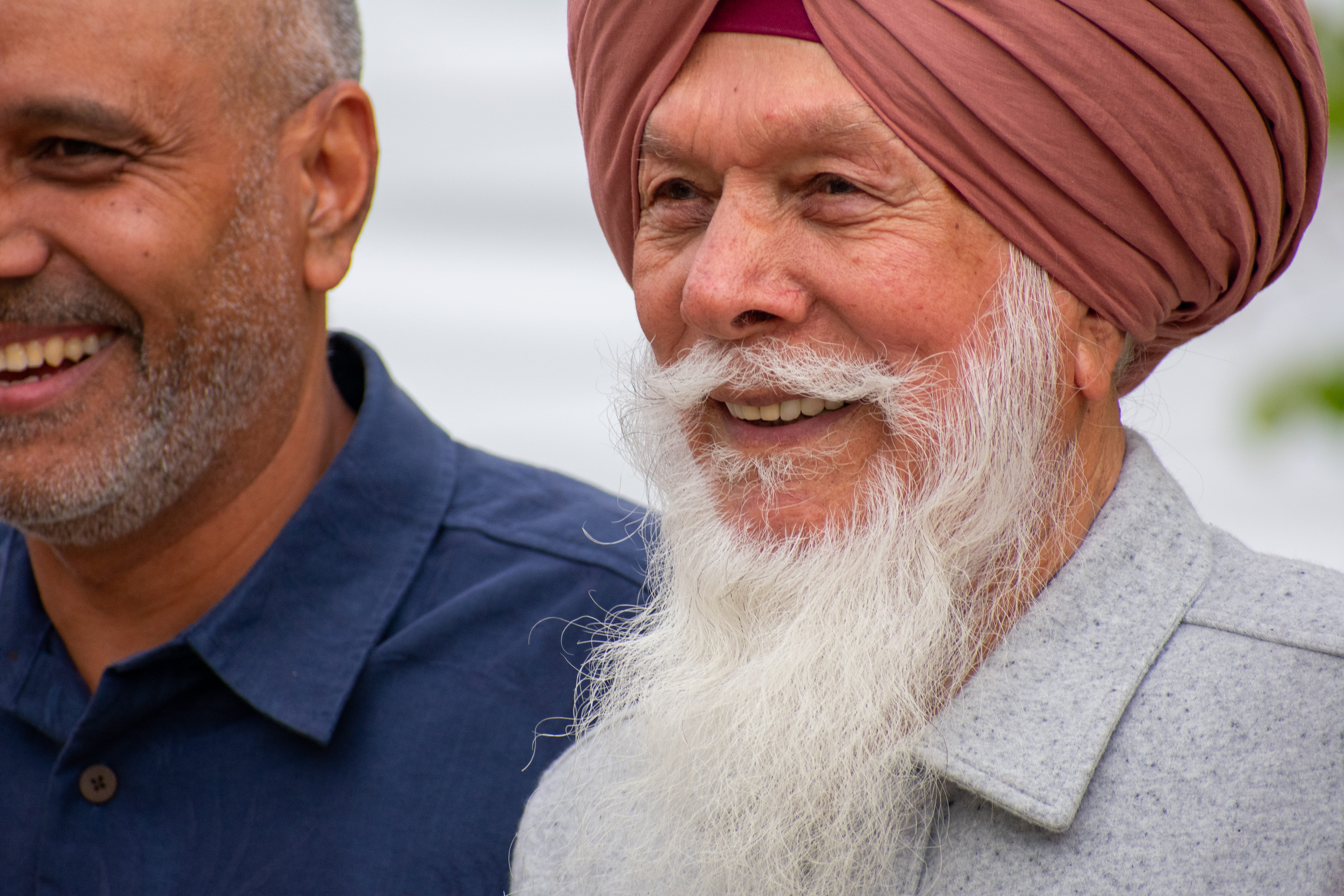
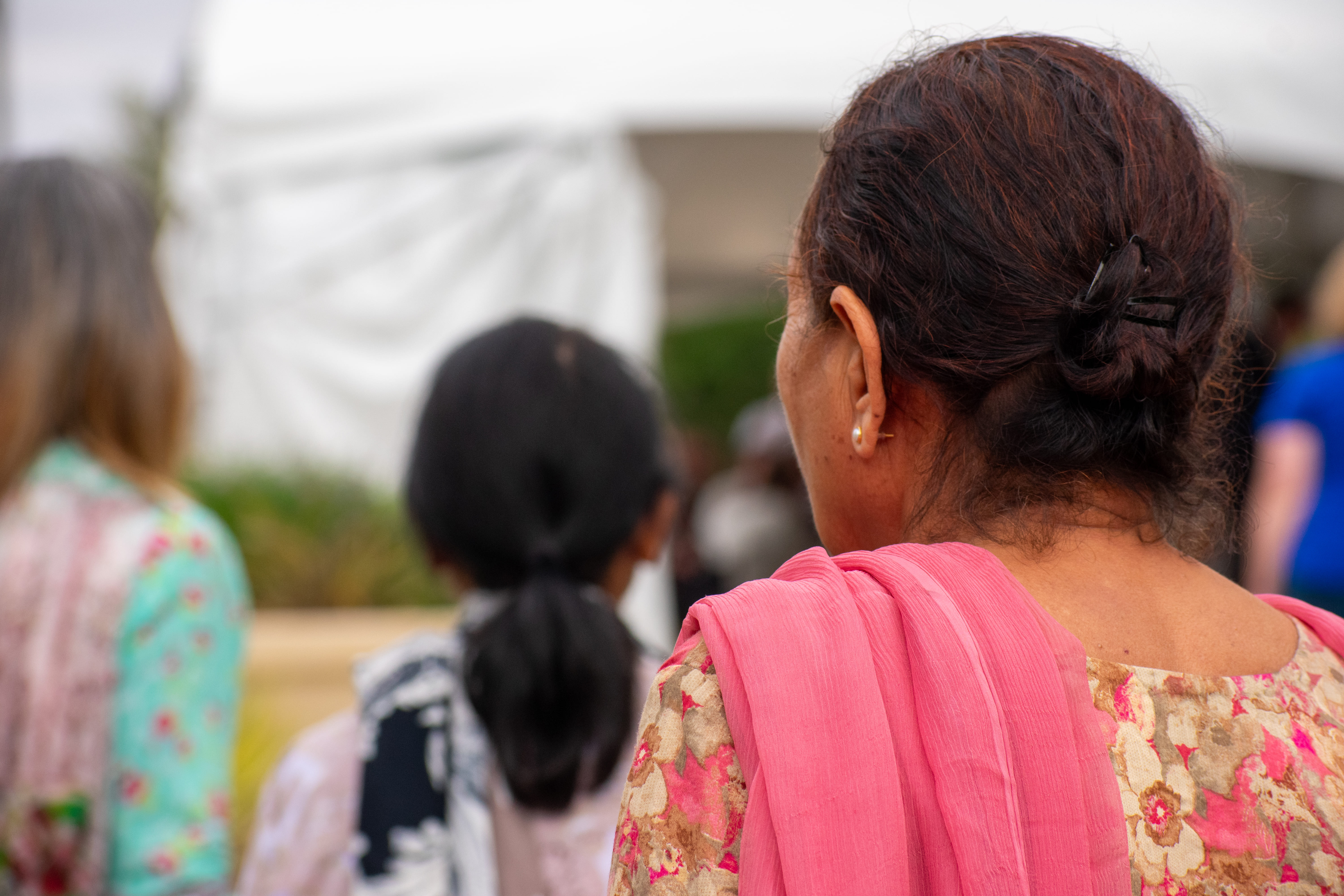
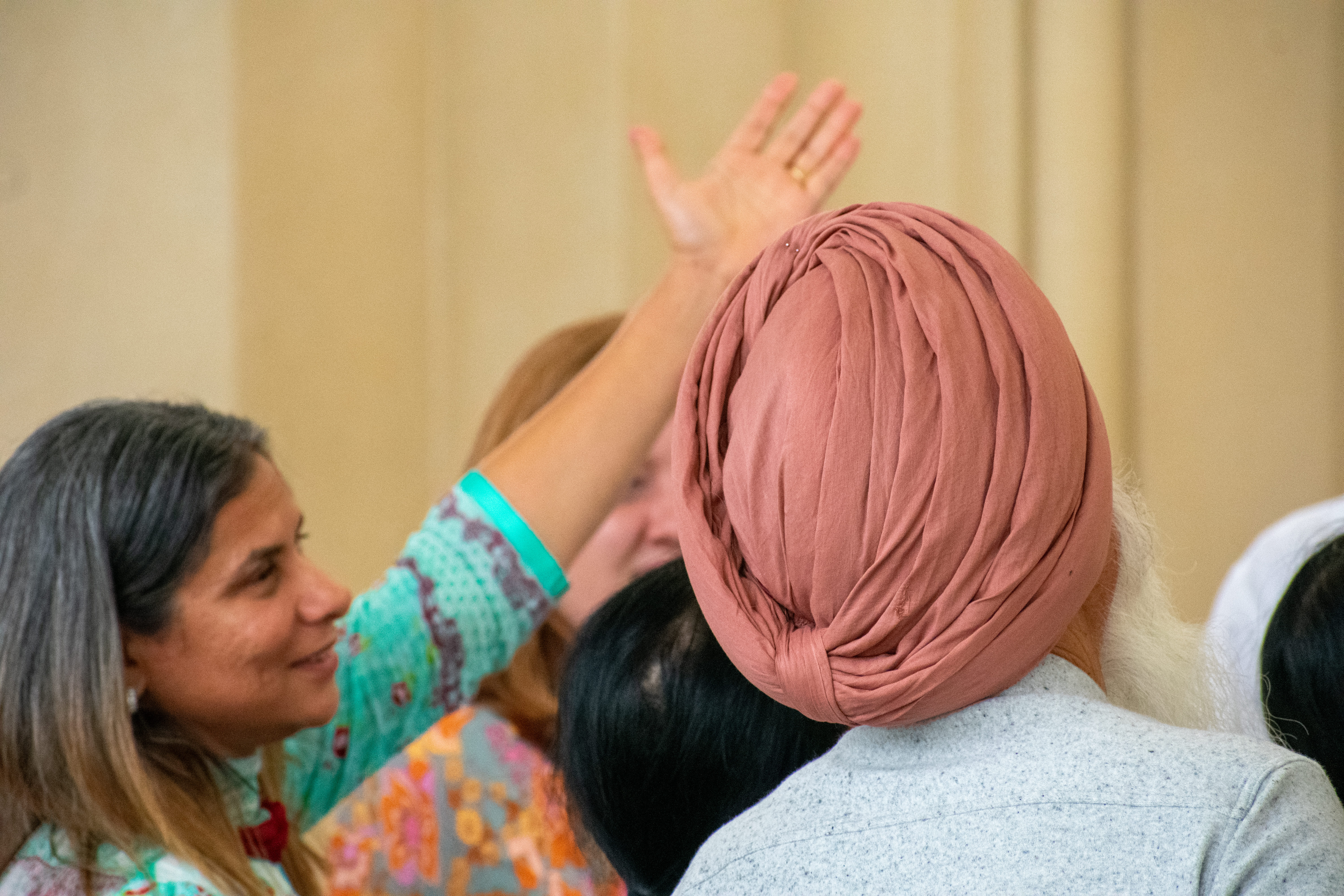
Interfaith Connections
When Archna and the Singh family entered the temple, Archna was sure to show every detail and answer any questions they had.
“That girl, Archna, looked like she was one of our daughters,” said Raj’s father, Parmjit Singh Pammi. “She was also very expressive, and very accepting and polite. I asked a lot of questions, and she gave beautiful answers.”
Pammi noted the similarities between the beliefs of the Sikh religion and those of Latter-day Saints, specifically the theological and philosophical part.
“… Belief in the afterlife, then sharing life’s experiences and doing service to each other. Then emphasis on family.”
Offering more explanation, Parmjit Singh Pammi noted how one of the early Sikh leaders, Guru Nanak, believed the family should be strong. During Nanak’s life, India had become enslaved because of the caste system. Nanak, however, believed family units should be united to defend themselves against invaders.
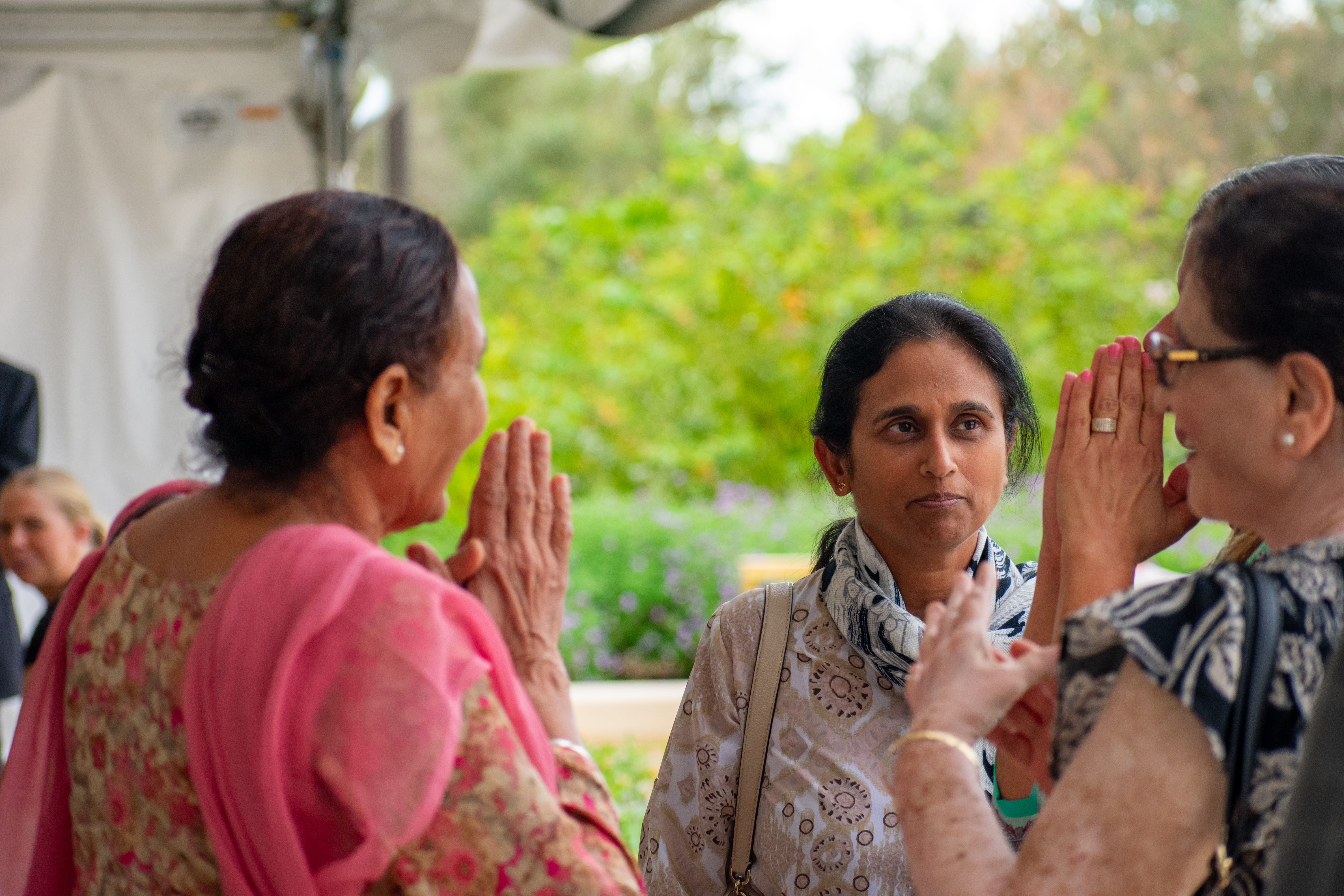
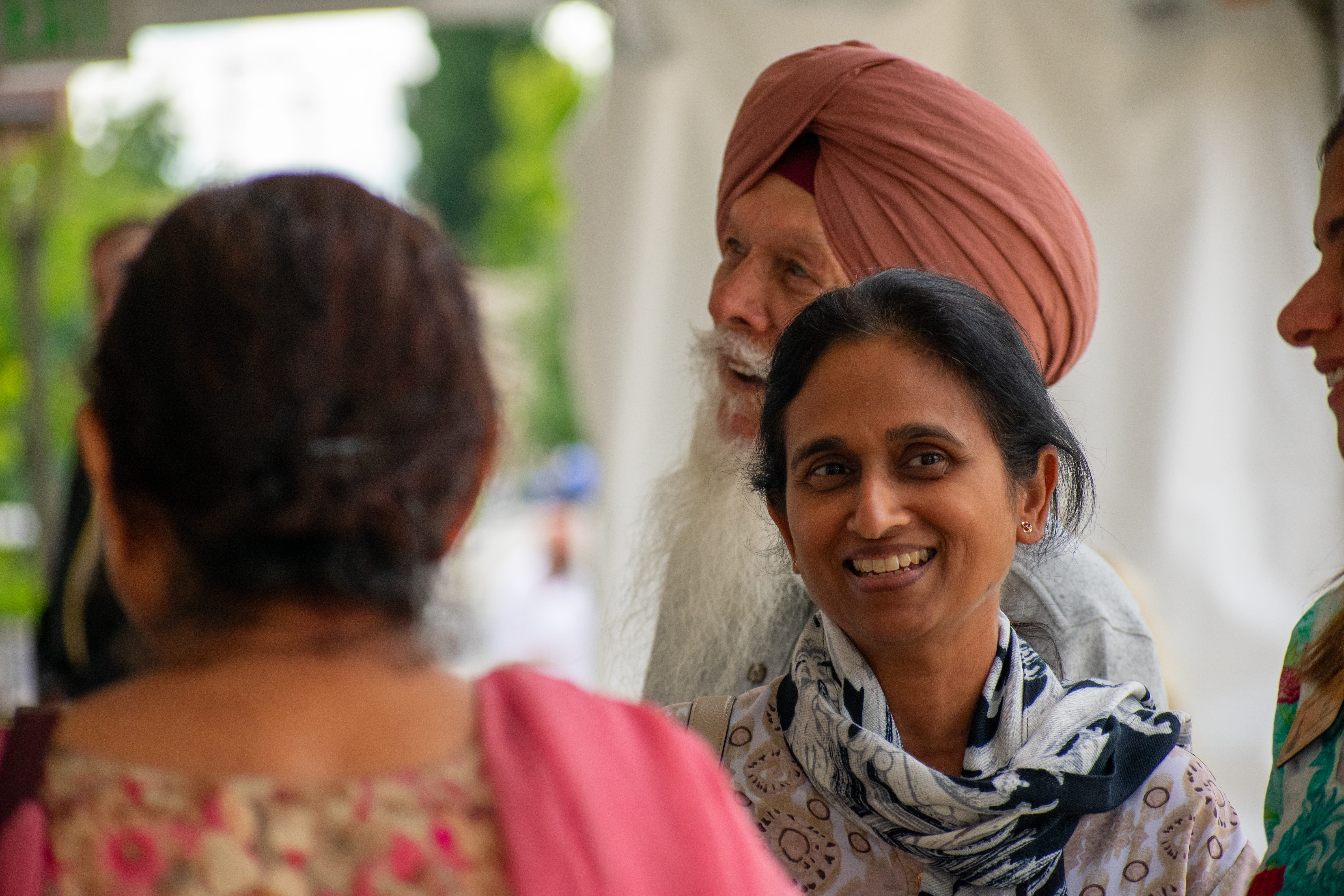
In the temple, Archna directed the family to the mirrors in the sealing room as she had with others before. The Singhs all stood to look into the mirror that reflected each other forever and ever, representing eternal families. They smiled as they all stood and observed.
Before leaving the open house, Parmjit Singh Pammi paused to say, “The Sikhs and the Mormons … are among the later religions of the world. And they have dealt with problems … people have faced during the last few centuries. So, there should be more interchange. I’ll be happy to do that.”
Though our temples stand for two different religions, they hold and connect the values, wants and desires of many people here on earth.




